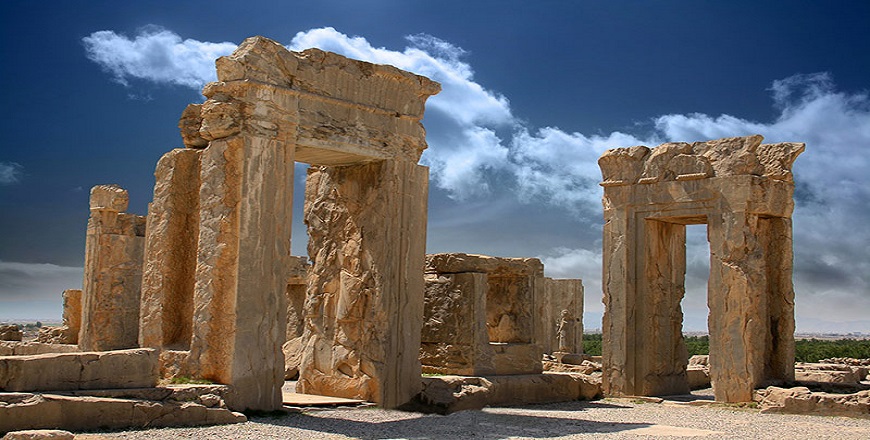

Darius the great
Darius (522-486) was an Achaemenid and a very able administrator who divided his vast empire into twenty satrapies, each with a governor, or satrap, and a military commander independent from him, both of whose activities were checked by a secret intelligence service –“the Shah’s eyes and ears”- to forestall rebellion.
This did not stop revolts and rebellions out in regions and provinces, which is not surprising in such a vast empire, made up of diverse peoples and run with the transport and technology of the age. There were revolts in Babylonia and elsewhere, but, in view of subsequent history, most important of all in Ionia, which led to defeat at Marathon a few years before Darius’ death. Yet he extended the frontiers of the empire in the Caucusus, beyond the Caspian Sea and beyond the Oxus, which were inhabited by various Iranian and non-Iranian nomadic peoples.
Not only was Darius a very able civil and military ruler, but he was also a man of vision and grandeur, conscious of building monuments to his name and leaving his version of events to posterity. He began the building of the complex of palaces known as Persepolis some 60 kilometers north-east of Shiraz, buildings that redounded to his power and glory and to art. This was the new and most important capital of the empire, the others being at Babylon, Ecbatana and Susa, where he also built a monumental palace, of which unfortunately no part is still standing. Since he was usually on the move, the king and his retinue could winter in Susa, spend the spring in Persepolis and go to cool elevations of Ecbatana during the summer.
Archaeological evidence suggests that the earliest remains of Persepolis date from around 518 BC, only for four years after the accession of Darius. Some scholars have suggested that Cyrus chose the site of Persepolis, but it was Darius who built the terrace and the great palaces. He ordered the construction of Apadana Palace and the Debating Hall, the main imperial Treasury and its surroundings, which were completed during the region of his son, Xerxes. Further construction continued until the downfall of the Achaemenid dynasty.
The greatest and most glorious palace at Persepolis was Apadana, used for the King of Kings’ official audience. The work began in 515 BC and was completed thirty years later. The palace had a grand hall in the shape of a square with seventy two columns, thirteen of which still stand on the enormous platform in the surviving ruins of the city. The columns carried the weight of the vast and heavy ceiling.
Perhaps no less spectacular as a feat of civil engineering was the construction of the royal road from Susa to Lydia, the capital of Sardis. The road had 111 stations, was patrolled by army units, could be covered from end to end in three months, which was very fast for the time, and was used by the king’s couriers to receive information and convey commands. Almost equally impressive was the construction of a canal in Egypt (already begun before the Persian conquest) from the Nile to the Red sea, thus connecting the Mediterranean to the Indian Ocean.
In his inscription Darius addressed Ahura Mazda, the Zoroastrians’ supreme deity, as the supreme lord to whom he owed his sovereignty on earth. This may be taken as evidence that he was a Zoroastrian but other evidence makes this unlikely. First, Zoroastrianism could not have been the state religion because, had this been the case, Darius like Cyrus, would not have tolerated and sometimes even paid tribute to other people’s cults and gods. Second, Zoroaster’s name is not mentioned in any of the inscriptions. Third, the Achaemenid kings, including Darius, were buried in tombs, contrary to the strict Zoroastrian rule that the dead should be exposed to the elements. Fourth, Ahura Mazda was also one of the pre-Zoroastrian Iranian triad, Ahura Mazda- Mithra-Anahita. Besides, the cult of the entire Iranian pantheon flourished at this time and it is not even certain that ordinary Persians had yet fully absorbed Zoroastrianism.
Darius’ war with Athens followed his subjugation of the Ionians and conquest of some Aegean islands and the suppression of the revolt of some Greek cities in Asia Minor that had been backed by Athens. The decisive battle was fought in Marathon in 490 in which the Persians were defeated. From the point of view of the Persian empire this was a relatively minor setback, but from the vantage point of Europe it was a historic event...Read more